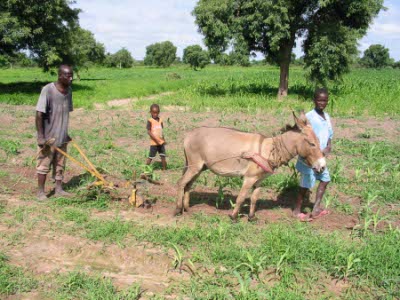Greenhouse effect | Land-use changes
Land cover change, particularly changes in forest cover such as deforestation (removal of forests) and afforestation (planting of forests), can act as a driver of climate change in several ways. Deforestation and forest degradation lead to emissions of greenhouse gases, which contribute to the current rise in atmospheric greenhouse gas concentrations and hence contribute to global warming. Afforestation can provide a carbon sink and so is one means of reducing net carbon emissions.
Land cover change also influences climate by modifying the physical properties of the land surface which affect the surface fluxes of radiation, heat, moisture and momentum when the character of the vegetation cover is modified, these energy and water flows are altered so changes to the climate can result. Conversion of forest to cropland or pasture can reduce the aerodynamic roughness of the landscape and decrease both the capture of rainfall on the canopy and the root extraction of soil moisture; these changes tend to decrease evaporation and hence the fluxes of moisture and latent heat from the surface to the atmosphere, which acts to increase the temperature near the surface. Also, a forested landscape generally has a lower surface albedo (reflectivity) than open land, particularly in conditions of lying snow when shortwave radiation is trapped by multiple reflections within the forest canopy. Deforestation can therefore lead to increased shortwave radiation reflection, which provides a cooling influence. The relative importance of these processes depends on local conditions and can vary with season and location.
As an example of a region where land cover change may be important, the case of the Sahel is presented below.

Climate change is a worrisome process in the West African region of the Sahel because of the many impacts on natural resources depletion hindering the introduction of adequate natural resource management and development policies for poor rural dwellers. Climate change and variability in the Sahel became well-known worldwide during the drought catastrophes of the 1970s and 1980s. Since then the region has been associated with images of rolling sand dunes, infertile soils, low water availability and vegetation degradation devastating otherwise fruitful land. In Eastern Saloum-Senegal, the general view of the local population on the rapid evolution land degradation is associated with the observed negative trends and magnitude of environmental change. The current debate on population resilience and adaptation in this area stems from the impact of climate change but also from responses to other stresses such as inappropriate policy or economic factors. The combination of various stresses under conditions of chronic poverty makes it difficult to cope with for people living under subsistence economies in a context of changing rainfall regimes and little supplies from the state. Although immediate responses are based on the increased pressure on natural resources, the main long-term responses to climate change can be either at the farm level (adapting cultivation techniques and improvement of soil quality, crop diversification) or off farm (relating to trade, emigration, organizational dynamics, micro-credit provision, etc.).
